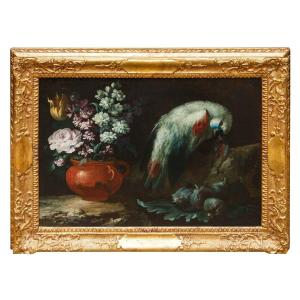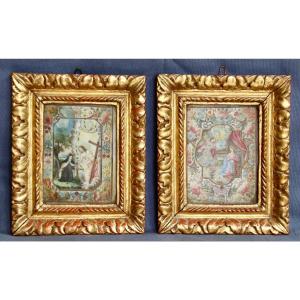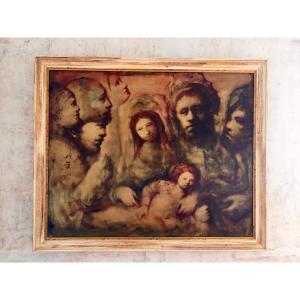Adoration of the shepherds
Oil on board, cm 65.5 x 45.5
With frame, cm 73 x 54
This table belongs to the Flemish production of the first half of the seventeenth century, given the stylistic links with the previous century and the orderly layout both of the background and the arrangement of the characters. The shaded outlines and the pictorial materiality indicate knowledge of the teachings of the new generation of Flemish painters, whose most illustrious examples can be cited are those of Rubens and Rembrandt; adherence to these innovations is not total, As shown by the absence of an impact chiaroscuro, a night setting and a relatively contrasting light source. The faces of the characters are reminiscent of those present in Flemish and Nordic works but rendered in a more sweetened way, as well as their poses and their arrangement within the scene. The anonymous artist seems to have also come into contact with other schools and painters from other parts of the continent, Like Italy, like other Flemish contemporaries who undertook trips to the peninsula to learn the notions and techniques of the great masters. If some took the road traced by Caravaggio, others focused on the instances of the sixteenth century Mannerism of central Italy; among the various personalities who stopped in various Italian cities stand out those of Rubens (1577-1640) and Van Dick (1599-1641) but like them many other artists from Flanders went to Italy either for short periods or for many years, undertaking long-term careers and internalizing the stylistic traits of the great masters, as did for example Denijs Calvaert (1540-1619), painter born in Antwerp and later moved to Bologna who embraced the art of the Emilian and Bolognese school.


































 Le Magazine de PROANTIC
Le Magazine de PROANTIC TRÉSORS Magazine
TRÉSORS Magazine Rivista Artiquariato
Rivista Artiquariato